Clusia vegetation, generally known as the autograph tree are the natives of tropical America. The branches of the Clusia vegetation develop horizontally, and the leaves are fairly difficult, leathery, and thick. Clusia has received round 150 species of its form. Clusia Hedge (Clusia rosea and Guttifera) has an unique texture and is an uncommon and excellent plant for home landscapes. This plant absorbs carbon dioxide at night time.
Clusia Hedge (Guttifera)
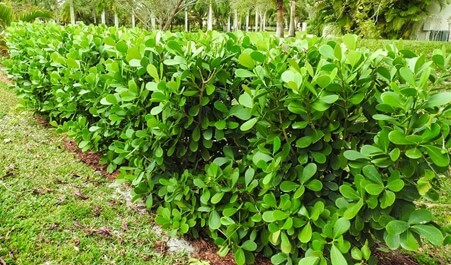
Clusia Guttifera is an evergreen shrub present in South Florida. The oval evergreen leaves create a dense leafage, and therefore it’s terrific for creating a personal display. These vegetation develop properly in heat temperatures, particularly in the summertime season. The clusia plant wants fertile soil for its outstanding development. The thick clusia Guttifera leaves create an off-the-cuff hedge. Common trimming must be completed to maintain the hedge formal. These clusia hedges are excellent for having shelter from the sturdy wind if you’re out of your properties.
Tips on how to Care?
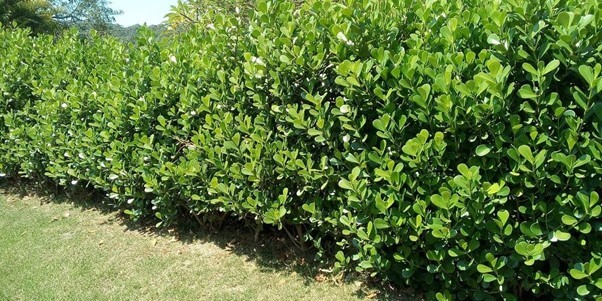
Clusia hedge (Guttifera) is present in tropical international locations. These shrubs develop with decrease branches which can be very near the bottom. The vegetation develop as much as 7.5 m and need to be trimmed recurrently. These clusia hedges are excellent for landscaping due to their shiny inexperienced texture.
These vegetation might be planted together with fences that function a privateness display. These vegetation additionally develop properly in containers, buckets, and many others. The clusia hedges want satisfactory quantities of daylight for round six to eight years. Do water the plant recurrently to thrive beneath the Solar’s warmth and in partial shade.
Soil
Clusia Guttifera hedges require fertile soil and good drainage. The plant solely requires good high quality soil to develop accurately. In any other case, it has no such bills or large care. It’s excellent for offering your vegetation with fertile soil, however the Clusia Guttifera hedges are additionally discovered within the coastal areas the place the soil situation is poor.
Be sure that your soil has a superb drainage system, or it turns into tough for the plant to develop. If not, the drainage system must be quickly improved by taking the required steps. By no means put numerous fertilizers or chemical substances for the expansion of the plant.
Including extra of those could result in injury. Know the sure amount after which apply as a result of this additionally helps to retain your plant’s moisture, which is equally essential.
Water
As I’ve talked about above, water the vegetation on daily basis. You might say that because the Clusia Guttifera vegetation are drought resistant, so why do I have to water them on daily basis? The reply is sure. It helps the roots of your plant to remain hydrated, so watering recurrently is crucial.
There are numerous kinds of Clusia hedges. Most of them have to get appropriately watered to develop.
Simply after planting, the vegetation are supplied with 5 l of water each 1 m of the hedges within the first 12 months. Perhaps you may neglect watering the vegetation in any season however always remember watering them in the course of the summer time season.
Temperature
These Clusia Guttifera hedges develop properly within the daylight, particularly in the summertime seasons. The minimal temperature required for the expansion of the vegetation is -1° to 10° celsius. Clusia Guttifera hedges love excessive humidity of round 50%.
So, it’s excellent for maintaining the vegetation outdoors in the course of the summer time season. If you’re feeling insecure concerning the well being of your plant, bear in mind the assertion talked about above.
Tips on how to Plant?
Caring for the Clusia Guttifera hedges will not be an enormous deal, however remember the fact that you could kick begin your plant journey with little wholesome shrubs. Deliver sufficient Clusia Guttifera vegetation for a ravishing and wholesome hedgerow. Make sure that earlier than planting that the soul is fertile and has received a correct drainage system.
For a proper hedgerow plant, the small shrubs at 1.2 m. You might also want to have an off-the-cuff hedgerow. For that, you may place your vegetation sustaining a bit extra distance between one another.
Dig holes deep in order that the roots of the vegetation can adequately match inside. Place the vegetation contained in the deep gap and canopy the remaining portion with soil. This protecting must be completed very minutely. Quickly after protecting water, the vegetation for round 15 to twenty minutes. Water on daily basis for the subsequent two weeks till the shrubs develop a bit.
Tip – Wait till the soil dries up. Don’t carry on watering the completely moist soil. Carry on checking the soil. If moisture is absent, do water the vegetation deeply. Spring is the preferable season for the Clusia Guttifera hedges to develop.
Trimming
These Clusia Guttifera hedges don’t want a lot trimming. These are to be trimmed to keep up a proper form. Trimming is finished to encourage extra development of the vegetation. These vegetation normally reply properly in case of sunshine trimming.
Trimming correctly would assist the vegetation to develop a ravishing sq. form. This additionally ensures a dense and pure privateness display all through.
Ailments
These vegetation are free from illnesses. They develop properly and healthily beneath the Solar and in the course of the summer time season. Watering is crucial, as talked about above. Simply don’t water repeatedly. Wait until the soil dries; in any other case, roots may get rotten.
Clusia Tree (Rosea)
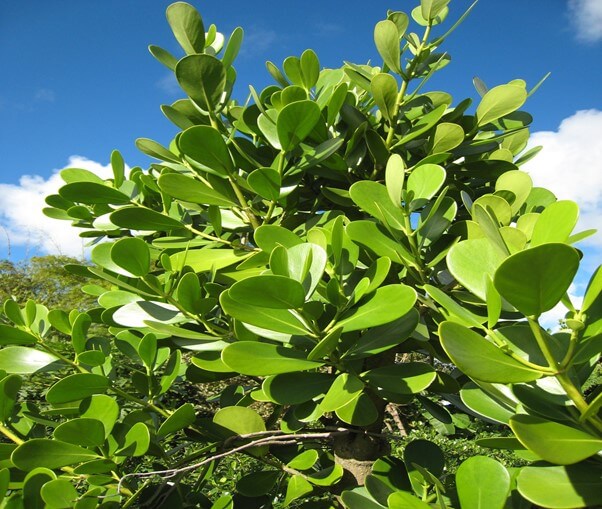
Clusia rosea is one other selection. It’s a giant however medium-sized flowering tree that has received the identical bushy leaves. These Clusia rosea bushes are present in tropical America. Often known as an autograph tree or pitch apple.
These Clusia rosea bushes develop as much as 20 m tall. The colour of the leaves is olive inexperienced and are oval. These bushes don’t require a lot care and have gotten low upkeep prices. These Clusia rosea bushes work very properly as hedges, shades, and many others. These bushes don’t develop so huge.
It grows as small to medium-sized bushes. You may as well develop these bushes as a large shrub.
Tips on how to Care?
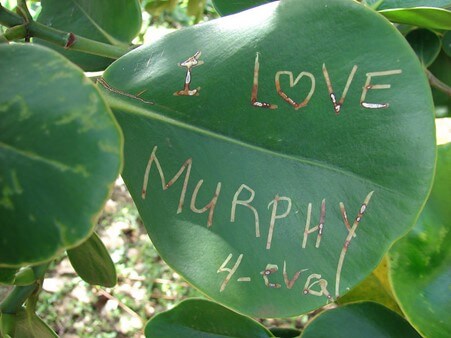
Clusia rosea bushes are also called Balsam Apple. These bushes are largely present in elements of Central America. Clusia rosea performs finest beneath brilliant daylight (outside). You might preserve your small tree indoor and make it possible for the tree is stored someplace the place the sunshine is offered.
Watering shouldn’t be completed often. Water the soil solely after it has dried out. These bushes have gotten the standard of tolerating quick intervals of drought. The drainage system must be truthful, together with fertile soil.
Clusia rosea prefers the summer time season fairly than the winters. It could additionally tolerate a excessive quantity of humidity. These bushes produce flowers in the course of the late spring and develop quickly.
Soil
The soil ought to have a sound drainage system, and it must be each fertile and a fast-draining one. There are a number of planting methods. It’s worthwhile to handle the way in which you might be planting.
The vegetation must be planted in a means that will make the vegetation glad.
If you’re placing your Clusia rosea plant right into a poor draining soil, it is possible for you to to view that the plant roots are getting rotten, and it could be a tragic second for each the plant and also you.
Everytime you plan to purchase a Clusia rosea plant, it is possible for you to to see that your plant is planted in a pot stuffed with soil. There isn’t a have to take away the plant from the pot and plant it some other place. You are able to do that everytime you see the roots rising.
Water
These vegetation like to cuddle moist situations however by no means select overwatering. Watering must be completed completely within the topsoil solely after the soil has dried up. Do water the vegetation repeatedly till the water flows out of the underside holes.
Make sure that the roots of the plant are by no means in full water contained in the pot. That is dangerous to the roots of the Clusia rosea vegetation. You needn’t fear concerning the water high quality as a result of these vegetation are okay with all forms of water.
So, faucet water is adequate for watering these vegetation. The one factor to bear in mind is that by no means over water the vegetation. It’s harmful for the roots! In case you see your soil is taking a very long time to dry up than the standard time, this is likely to be the primary signal of root rotting.
Deliver huge pots for Clusia rosea vegetation with a number of drainage holes under them. Within the winter season, the soil wants much less water as a result of it takes time to dry out. And till and except your soil is drying, you can’t water them once more.
Temperature
The preferable temperature of those Clusia rosea vegetation is between 15° to 30° celsius. These vegetation can’t tolerate chilly climate, so if you happen to preserve your plant indoor, keep away from maintaining it in an air-conditioned room. This can hurt the well being of the plant.
Gentle
- Outside – Direct Daylight
- Indoors – Oblique Daylight
Some vegetation can’t survive in direct daylight, however Clusia rosea finds it to be happier when beneath direct daylight. Place your plant close to a south-faced window proper from its younger age if you happen to preserve your plant indoors.
This can allow the little vegetation to grow to be extra tolerant in the direction of direct daylight. This observe from a really younger age is crucial since you may consider maintaining the plant outside as soon as it grows.
At the moment, the plant will likely be going through issues, and you’ll get particular disappointing outcomes. Comparable to brown leaves, suggestions, and many others. When your plant was stored indoors, it didn’t have the behavior of going through direct daylight, so with none observe, when it’s uncovered to the direct gentle outdoors, the leaves of the plant get burned.
Fertilizers
Clusia rosea vegetation are tolerant to decrease vitamins availability however will do significantly better if supplied with the right amount of vitamins. An equal quantity of phosphorus, potassium, and nitrogen is to be added each month. This ensures a wholesome rise of the Clusia rosea vegetation.
By no means overload the vegetation with vitamins content material with out figuring out the correct quantity. All the time bear in mind the purpose is to avoid wasting the vegetation from vitamins deficiency. So, at all times do no matter is required and by no means carry out pointless duties to make sure development, not figuring out the complete plant story. Solar is the very best meals obtainable on this planet for vegetation, and fertilizers are a multivitamin for them.
Humidity
Clusia rosea vegetation can tolerate medium to larger ranges of humidity. However additionally it is okay with decrease humidity ranges. Humidity will not be an enormous deal for such vegetation as there are vegetation with many points with the completely different humidity ranges. In case you might be seeing the leaves of your plant turning brown or getting curled, it is likely to be a logo of decrease humidity ranges.
You should utilize a digital hygrometer to verify the humidity ranges in order that the steps might be taken beforehand in decrease humidity. All the time preserve the humidity degree. Attempt to preserve it above 40%.
To extend the humidity degree, preserve many vegetation in the identical place. It really works properly and is a widespread observe.
Flowering
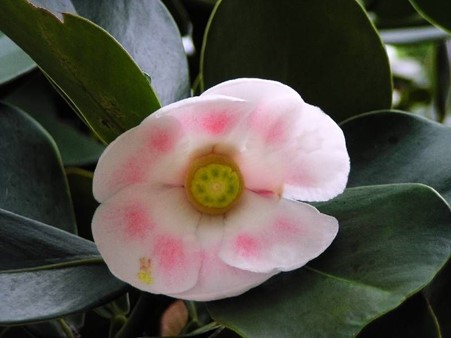
Clusia rosea vegetation bear flowers, however it’s extra prone to happen every time the vegetation are positioned outside fairly than maintaining indoors. This occurs because of decrease daylight as a result of inside the home, and you’ll by no means have as a lot daylight current outdoors.
To make sure flowering, the vegetation want brilliant daylight, correct watering, and excellent quantities of fertilizers. The vegetation produce white and pink flowers in the course of the late spring and early summer time. These flowers final for a number of weeks and shut within the day because of warmth and open in the course of the night time hours.
Clusia rosea additionally produces fruits. These fruits are small inexperienced balls that appear to be apples. The colour adjustments and turns into black, which is a logo of ripening.
Propagation
After all, you may sow a seed for rising a brand new child plant. However stem cuttings are additionally a means out for propagation. Put together an acceptable pot with fertile soil. The moisture content material within the pot must be correct. Reduce 4- to 6-inch-long stems together with a number of leaves on them. Put together little holes for these cuttings.
Use a pencil or a pen to create holes in order that the stem cuttings might be simply inserted into the soil. Insert the cuttings within the created holes. Do cowl the pot with plastic. This materials will create a moist atmosphere which is essential for the Clusia rosea vegetation.
Place the pot in a heat place the place daylight is offered instantly or not directly. Do verify the moisture content material of the soil each few days. Inside two weeks, you may see the roots rising, after which you may take away the plastic from the pot and go-ahead with commonplace care.
Repotting
Clusia rosea vegetation develop quick in comparison with every other dwelling vegetation. Initially, you may preserve your plant in a small pot, however repotting turns into crucial as quickly as the foundation grows. If you don’t change the pot, the well being of your plant could deteriorate.
You may see roots popping out from the underside holes made for drainage. So, by seeing all these symbols, it’s essential to perceive that the time of repotting has come. Select a pot that’s 2 inches greater than the earlier one.
By no means go above 2 inches as a result of huge pots improve the prospect of overwatering issues because the soil in these greater pots stays moist for an extended time. Gently shift your plant from the pot. Make it possible for your plant doesn’t endure any injury, particularly the roots whereas shifting.
Whereas shifting, if you happen to discover a horrible scent, perceive that this scent comes from unhealthy roots. Put together the brand new pot and place the plant within the new pot. Test whether or not the peak of the plant is right in response to the pot or not.
Fill the soil into the brand new pot. Water the plant to barely dampen the soil. By no means place the repotted plant beneath direct daylight, as it’s preferable to position it beneath oblique daylight for just a few weeks simply after repotting.
Ailments
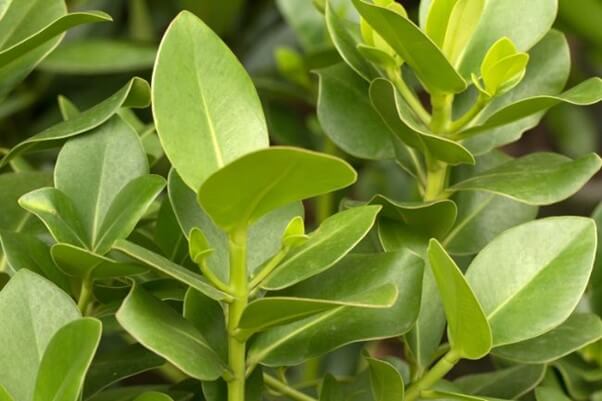
These Clusia rosea vegetation don’t endure a lot from any of the plant illnesses. Few bugs may trigger issues, however that occurs fairly often. The one illness which might hurt Clusia rosea vegetation to the fullest is nothing however overwatering them. Fungi and micro organism could hurt the plant in such waterlogged conditions, leading to root rot or plant dying.
Why Yellow Leaves?
Yellow leaves are widespread in Clusia rosea vegetation. This occurs because of overwatering. It begins from one leaf, and finally all of the leaves sadly get influenced by and switch into yellow colour.
Extreme direct daylight may additionally be another excuse for the presence of yellow leaves within the plant. Elements like humidity, too low or too many fertilizers, temperature, and illnesses additionally result in yellow leaves. It turns into disheartening for the proprietor to witness a inexperienced leafy plant turning right into a yellow one!

















































